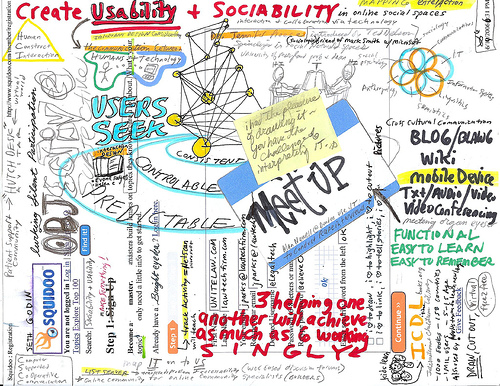 On 12 May the NSW Branch of the Australian Society of Archivists (ASA) and the ASA Reference Access and Public Program Special Interest Group (RAPPSIG) co-hosted a seminar looking at the impact of digitisation and other digital initiatives on archival reference and access in the 21st century. The seminar was one of the events for the annual Information Awareness Month. The presenters explored opportunities and challenges facing archives institutions, big and small, in the digital age.
On 12 May the NSW Branch of the Australian Society of Archivists (ASA) and the ASA Reference Access and Public Program Special Interest Group (RAPPSIG) co-hosted a seminar looking at the impact of digitisation and other digital initiatives on archival reference and access in the 21st century. The seminar was one of the events for the annual Information Awareness Month. The presenters explored opportunities and challenges facing archives institutions, big and small, in the digital age.
The wrap-up session provided an opportunity for those attending to take part in a general discussion about some of the issues raised during the day. This is a summary of those discussions:
Planning
- Planning is the key to any successful digitisation project – irrespective of the scale:
- The project needs to be part of a coordinated strategy and not undertaken in isolation from other archives work
- Digitisation standards need to be explored
- The aims and objectives of the project need to be defined and the project needs to be fully scoped, costed and the all-important issues of copyright considered before it gets underway.
Visibility and Promotion
- The potential for increased visibility in the digital age has both an upside and a downside for the smaller archives institution:
- It can lead to an increase in demand for services which may pose additional challenges for a small archives operation
- On the other hand, the opportunity for increased visibility offered by the web can be tempered when ‘the archives’ is secondary to the primary the role and activities of the organisation and not the core business. As a result the ‘archives’ can be lost.
- There is tremendous potential for even a small scale digitisation project to promote an archives institution:
- Digital galleries and portals can offer an archives institution the opportunity make a small slice of the collection available online without embarking on a major digitisation program.
- Social networking sites, such as Flickr, may be equally as effective in promoting institutions and the archives collections.
Preservation
- The role of digitisation – preservation versus accessibility – and the place of traditional approaches to archival preservation such as microfilming:
- While digitisation can help both archivist and researchers (and save wear and tear on the record) there is still a place for traditional preservation formats such as microfilm even in the digital age.
Impact on role of the archivist
- The ‘reference interview’ between archivist and researcher – how has this changed in the digital age? Is it realistic to explore opportunities such as an ‘Ask an archivist’ service? Would this be effective when dealing with the plethora of record series and items making up an institutions’ archives collection?
- The impact of digitisation on traditional reading room and other services:
- Reading room visits may decline but the use of online services may dramatically increase. While this may be readily managed within a larger archives institution how would a smaller institution cope with sky rocketing demands?
(As part of this discussion thread it was noted that there will be a continuing need to maintain a balance between ever-increasing user expectations for digital access to the records and meeting ongoing institutional commitments)
- Reading room visits may decline but the use of online services may dramatically increase. While this may be readily managed within a larger archives institution how would a smaller institution cope with sky rocketing demands?
- Web 2.0 and blogging – getting the best from your blog:
- The advice on the basic practicalities and “do’s and dont’s” about setting up a blog and the popularity of blogs for social networking was a recurring theme in the discussion.
Outsourcing
- In the past few years there has been an increase in the number of third parties providing access to digital copies of records on the internet. For some institutions this may offer an attractive opportunity to have significant parts of the collection indexed, digitised and made accessible on the web. The advantages, disadvantages, potential concerns, and long term consequences were explored.
Collaborative Opportunities
- Digitisation initiatives within the museum context:
- Despite limited access to project funding for digital initiatives some museums have been able to work collaboratively with the institution to provide digital access to the archives collections
- The use of digital copies of records relating to the school curriculum offers archives an opportunity to promote the collection. For some working in the school archives sector this may help in getting greater support for the archives program.
Volunteers
- The benefit of drawing on the skills and expertise of volunteers, whether they are former school students, or part of an organised volunteer program was acknowledge throughout the discussions. The difficulty for some of the smaller archives is that space constraints limit the opportunity to develop a volunteer program.
What do you think?
If you have any thoughts or advice on the issues outlined above feel free to post a comment. We’d love to hear from you!


